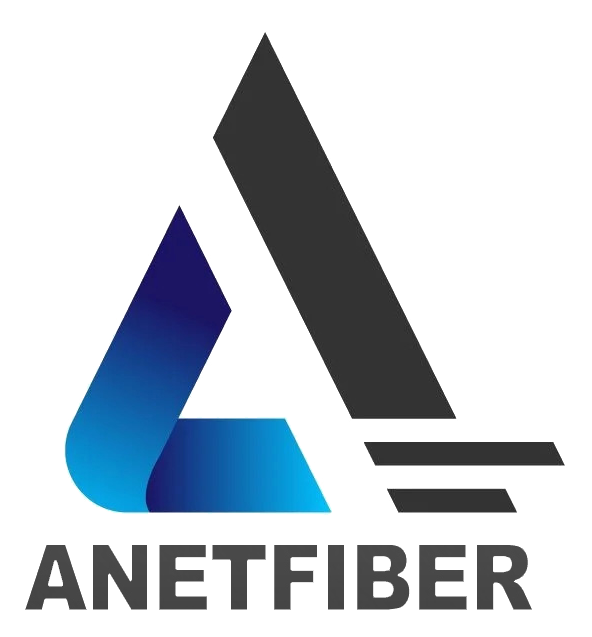5 Essential Installation Techniques for Optical Fiber Cables

Introduction to Optical Fiber Cable Installation
In the world of modern telecommunications, Optical Fiber has revolutionized the way data is transmitted. The successful deployment of Optical Fiber networks relies heavily on the proper installation of these intricate cables. The Importance of Proper Installation cannot be overstated, as it directly impacts the performance and longevity of the network.
An Overview of Installation Techniques reveals a variety of methods used to install Optical Fiber Cables, each suited to different environments and requirements. From trenching and direct burial for outdoor applications to aerial and indoor installation methods, there are specific techniques tailored to diverse scenarios.
Proper understanding and implementation of these Installation Techniques ensure that the Cables are laid out efficiently, minimizing signal loss and maximizing data transmission capabilities. In this blog post, we will delve into five essential techniques for installing Optical Fiber Cables, providing valuable insights into each method's intricacies.
Trenching and Direct Burial Techniques
When it comes to installing Optical Fiber Cables in outdoor environments, two primary techniques stand out: Trenching for Fiber Optic Cables and Direct Burial Fiber Optic Cables. Each method offers distinct advantages and is tailored to specific environmental considerations.
Trenching for Fiber Optic Cables
Trenching for Fiber Optic Cables involves a meticulous process of planning and digging trenches to accommodate the cables' placement. The first step in this technique is Planning and Digging Trenches, which requires careful consideration of the cable route, depth, and any potential obstacles. Once the planning phase is complete, the actual excavation begins, ensuring that the trench dimensions meet the specifications for laying the cables.
Following the trench's preparation, the next step involves Laying Conduits and Cables within the excavated area. This process demands precision to protect the cables from damage while providing a secure pathway for their installation. By utilizing conduits, it becomes easier to manage and maintain the cables over time, enhancing their longevity and performance.
Direct Burial Fiber Optic Cables
In scenarios where trenching may not be feasible or practical, such as in rural or remote areas, Direct Burial Fiber Optic Cables offer an alternative solution. The process begins with Preparing the Ground, which involves clearing any debris or obstructions that could hinder cable placement. Additionally, ensuring proper soil compaction is crucial to safeguard against potential cable damage due to ground shifts or external pressures.
Once the ground is adequately prepared, attention turns to Cable Laying and Protection, where specialized techniques are employed to lay the fiber optic cables directly into the ground. Protective measures such as burying them at optimal depths and using durable shielding materials are implemented to shield them from environmental elements and physical stressors.
By understanding these essential techniques for installing optical fiber cables through trenching and direct burial methods, network installers can effectively navigate diverse installation challenges while optimizing cable performance.
Aerial and Indoor Installation Methods
In addition to trenching and direct burial techniques, Aerial Fiber Optic Cable Installation and Indoor Fiber Optic Cable Installation offer specialized methods for deploying optical fiber networks in diverse environments.
Aerial Fiber Optic Cable Installation
When it comes to Aerial Fiber Optic Cable Installation, careful consideration must be given to Pole Selection and Cable Hanging. The selection of sturdy and reliable poles is crucial to ensure the cables are securely suspended above the ground. Proper cable hanging techniques, including tensioning and anchoring, are essential for maintaining the integrity of the network, especially in areas prone to high winds or extreme weather conditions.
Moreover, Weather and Environmental Considerations play a significant role in aerial installations. Extreme temperatures, precipitation, and exposure to UV radiation can impact cable performance over time. Therefore, utilizing weather-resistant materials and implementing protective measures against environmental factors are vital for ensuring the longevity of aerial fiber optic installations.
Indoor Fiber Optic Cable Installation
Indoor Fiber Optic Cable Installation involves meticulous Routing Through Buildings, requiring careful planning to navigate through complex indoor spaces while minimizing disruptions. Utilizing existing conduits or creating dedicated pathways within buildings ensures that the cables are installed efficiently without interfering with daily operations.
Furthermore, Avoiding Obstacles and Ensuring Safety is paramount during indoor installations. Adhering to building codes and safety regulations is essential to prevent accidental damage to the cables or posing risks to occupants. Implementing proper cable pulling techniques while avoiding obstacles such as electrical wiring or plumbing systems is critical for a seamless indoor installation process.
By understanding the intricacies of aerial and indoor installation methods for optical fiber cables, network installers can effectively adapt their approach based on specific environmental considerations while optimizing cable performance in both outdoor and indoor settings.
Splicing, Termination, and Connectors
After the successful installation of optical fiber cables, the next crucial step involves Splicing and Termination Methods to ensure seamless connectivity and signal transmission. Two primary methods employed for splicing and termination are Fusion Splicing and Mechanical Splicing.
Splicing and Termination Methods
Fusion Splicing is a highly precise technique that involves fusing or welding the ends of two optical fibers together using an electric arc. This method ensures minimal signal loss and provides a permanent connection that is robust and reliable. The fusion splicing process requires specialized equipment such as fusion splicers, cleavers, and protective sleeves to safeguard the spliced area from environmental factors.
On the other hand, Mechanical Splicing offers a flexible alternative by mechanically aligning two fiber ends and securing them within a splice unit. While it may not achieve the same low signal loss levels as fusion splicing, mechanical splicing is quicker and more cost-effective for certain applications. It eliminates the need for expensive equipment and can be performed in the field without requiring a controlled environment.
When it comes to Fiber Optic Cable Connectors, there are various types available to facilitate efficient connections between optical fibers. Common connector types include ST (Straight Tip), SC (Subscriber Connector), LC (Lucent Connector), and FC (Ferrule Connector). Each connector type has unique characteristics suited for specific network requirements, such as size, ease of use, or performance in high-density environments.
Fiber Optic Cable Connectors
Employing best practices for connecting fiber optic cables is essential to maintain optimal signal integrity. Proper cleaning of connector end faces before mating is crucial to prevent contamination that could degrade signal quality. Additionally, ensuring that connectors are securely mated with appropriate mating adapters helps minimize signal loss due to misalignment or disconnection.
By understanding the intricacies of splicing, termination methods, and fiber optic cable connectors, network installers can effectively ensure reliable connectivity while optimizing signal transmission capabilities across optical fiber networks.
Essential Equipment for Installation
When it comes to the successful installation of Optical Fiber Cables, having the right Installation Equipment for Fiber Optics is crucial. From specialized tools for trenching and burial to safety gear and best practices, each component plays a vital role in ensuring a seamless and reliable installation process.
Installation Equipment for Fiber Optics
Tools for Trenching and Burial
Proper trenching and burial of Optical Fiber Cables require a range of specialized tools to facilitate efficient and precise installation. Some essential tools include:
Trenching Machines: These machines are designed to dig trenches with precision, allowing for the careful placement of fiber optic cables while minimizing disruption to the surrounding environment.
Cable Plows: Cable plows are instrumental in laying cables directly into the ground, providing a streamlined approach to burial installations.
Conduit Installation Tools: When laying conduits for fiber optic cables, specialized tools such as conduit benders and cable lubricants ensure smooth conduit placement and cable routing.
Equipment for Aerial Installation
For aerial installations of Optical Fiber Cables, specific equipment is necessary to ensure secure and reliable deployment. This includes:
Aerial Cable Lashers: These devices are used to securely fasten fiber optic cables to support structures such as poles or towers, providing stability and protection against environmental elements.
Cable Tension Meters: Ensuring proper tension in aerial cables is essential for maintaining signal integrity. Cable tension meters help installers achieve optimal cable tension levels during installation.
Safety Gear and Best Practices
Personal Protective Equipment
During any fiber optic cable installation, wearing appropriate personal protective equipment (PPE) is paramount. This includes:
Safety Helmets: Protecting the head from potential impacts or falling objects.
Protective Eyewear: Shielding the eyes from debris or hazardous materials during installation activities.
High-Visibility Clothing: Enhancing visibility on-site, especially during outdoor installations or when working in low-light conditions.
Safety Protocols During Installation
Adhering to stringent safety protocols is essential to prevent accidents and ensure a secure working environment. Best practices include:
Conducting thorough site assessments before commencing any installation activities.
Implementing proper signage and barricades to alert others about ongoing installation work.
Providing comprehensive training on safe handling of equipment and adherence to safety guidelines.
Conclusion
Recap of Key Points
In summary, the installation of optical fiber cables demands meticulous planning and execution to ensure optimal network performance. The diverse techniques, including trenching, direct burial, aerial, and indoor installation methods, cater to specific environmental requirements. Each method presents unique challenges and considerations that network installers must address to guarantee the longevity and efficiency of optical fiber networks.
Splicing and termination methods play a critical role in establishing seamless connectivity across optical fiber cables. Whether through fusion splicing or mechanical splicing, achieving minimal signal loss is paramount for reliable data transmission. Additionally, selecting the appropriate fiber optic cable connectors and adhering to best practices for their connection are essential for maintaining signal integrity.
The deployment of essential equipment for installation, coupled with adherence to safety protocols, ensures a secure and efficient installation process. From specialized tools for trenching and burial to personal protective equipment, every aspect contributes to the successful implementation of optical fiber networks.
The Future of Fiber Optic Installation
As technology continues to advance, the future of fiber optic installation holds promising developments. Innovations in installation techniques and equipment aim to further streamline the deployment process while enhancing network reliability. Moreover, ongoing research into advanced splicing methods and connector technologies seeks to optimize signal transmission capabilities across optical fiber networks.
With an increasing emphasis on high-speed data transmission and connectivity, the evolution of fiber optic installation will continue to prioritize efficiency, reliability, and adaptability. As demand for robust telecommunications infrastructure grows, advancements in installation practices will play a pivotal role in meeting these evolving needs.
In conclusion, staying abreast of emerging trends and advancements in fiber optic installation is crucial for network installers looking to deliver cutting-edge solutions that meet the demands of tomorrow's digital landscape.
See Also
Optimizing Fiber Optic Testing and Maintenance for Peak Performance
Advantages of Hiring Professional Fiber Optic Installation Services
Safe Navigation of Cable Routing and Termination in Fiber Optic Installation
Explaining the 4 Key Components of Fiber Optic Cable Construction


